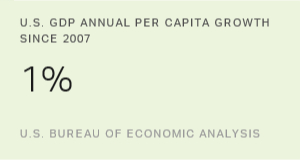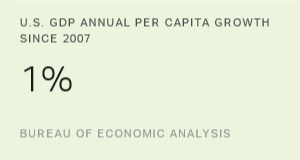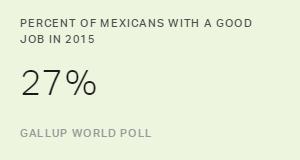Story Highlights
- Economies are seeing little or no economic growth
- Humans are born to build and seek meaning
- The desire to create something meaningful may spur builders globally
This is the second article in a three-part series.
Cities and regions around the world urgently need new economic energy.
According to a 2016 report from the International Monetary Fund, global growth has been anemic at best. In the U.S., the recent gross domestic product growth per capita has been stuck at 1% annually, according to the U.S. Bureau of Economic Analysis -- a sharp decline that has resulted in a shortfall of about $2 trillion.
This "secular stagnation," a condition of little or no economic growth in advanced economies -- coupled with the deceleration of economic growth in the developing economies -- does not bode well for the world's 7 billion citizens.
Against this backdrop, a new class of entrepreneurs -- more broadly defined as "builders" -- could potentially emerge around the world to revitalize economies. Business and city leaders, battling the effects of secular stagnation, need to .
As noted in the first article in this series, three trends could converge to inspire the emergence of builders in cities and societies:
- the scarcity of traditional good-paying jobs
- individuals' desire to live meaningful, productive lives that engage them
- the availability of technology that lowers the barriers to entry into entrepreneurship
This article focuses on the second trend: individuals' desire to live meaningful, productive lives.
Individuals' Desire to Live Meaningful, Productive Lives
Humans are born to build. We seek fulfillment, engagement and meaning in our lives. Each of us has the seed of a builder inside of us, expressed through the personal passions we pursue throughout our lives.
One example of this is a research group at the Massachusetts Institute of Technology's Media Lab called "Lifelong Kindergarten." This group -- inspired by the way young children learn through engaging their imagination, creating and building -- is inventing new technologies through a process of designing, experimenting and building. This process includes the hands-on building of demos and prototypes, along with extensive real-world testing.
The common thread through each project is the individual's desire to actively build something that solves a real-world problem and improves lives. Past projects include a device that displays information such as pollen count or stock performance without requiring an internet connection; a bionic prosthetic limb; facial-recognition technology that can measure humans' emotional reactions; and a robot that acts as a personal assistant for families.
Many projects conceptualized at the MIT Media Lab turn into products and, ultimately, into companies. More than 100 companies have originated in this lab since its founding in 1985.
Building anything -- an app, a blog, a book, a program, a product or a project -- that is meaningful and fulfilling to its builder sets in motion a process of learning and skill-building, increases their self-efficacy, helps them achieve mastery in a particular domain, and motivates and engages them.
Business and city leaders need to take note: Regular people can power economies by becoming engines of . Ubiquitous web access now makes it easy to share ideas, designs and prototypes. This process of building and sharing with others online creates communities, movements and, ultimately, millions of entrepreneurial opportunities for these builders. It also makes individuals potential job creators in a city, rather than job-seekers waiting for the next available opening.
The discusses how the availability of technology is lowering the barriers to entry into entrepreneurship.




